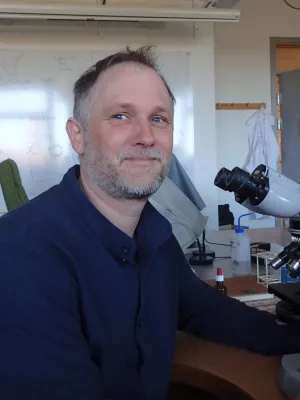
Karl Ljung
Lecturer

Mineral Soils Are an Important Intermediate Storage Pool of Black Carbon in Fennoscandian Boreal Forests
Author
Summary, in English
Approximately 40% of earth's carbon (C) stored in land vegetation and soil is within the boreal region. This large C pool is subjected to substantial removals and transformations during periodic wildfire. Fire-altered C, commonly known as pyrogenic carbon (PyC), plays a significant role in forest ecosystem functioning and composes a considerable fraction of C transport to limnic and oceanic sediments. While PyC stores are beginning to be quantified globally, knowledge is lacking regarding the drivers of their production and transport across ecosystems. This study used the chemo-thermal oxidation at 375°C (CTO-375) method to isolate a particularly refractory subset of PyC compounds, here called black carbon (BC), finding an average increase of 11.6 g BC m−2 at 1 year postfire in 50 separate wildfires occurring in Sweden during 2018. These increases could not be linked to proposed drivers, however BC storage in 50 additional nearby unburnt soils related strongly to soil mass while its proportion of the larger C pool related negatively to soil C:N. Fire approximately doubled BC stocks in the mineral layer but had no significant effect on BC in the organic layer where it was likely produced. Suppressed decomposition rates and low heating during fire in mineral subsoil relative to upper layers suggests potential removals of the doubled mineral layer BC are more likely transported out of the soil system than degraded in situ. Therefore, mineral soils are suggested to be an important storage pool for BC that can buffer short-term (production in fire) and long-term (cross-ecosystem transport) BC cycling.
Department/s
- Dept of Physical Geography and Ecosystem Science
- BECC: Biodiversity and Ecosystem services in a Changing Climate
- Quaternary Sciences
Publishing year
2022-11
Language
English
Publication/Series
Global Biogeochemical Cycles
Volume
36
Issue
11
Document type
Journal article
Publisher
American Geophysical Union (AGU)
Topic
- Soil Science
Keywords
- black carbon
- boreal wildfire
- carbon cycle
- fire severity
- mineral soil
- pyrogenic carbon
Status
Published
ISBN/ISSN/Other
- ISSN: 0886-6236

